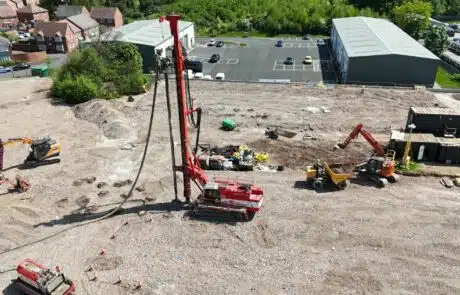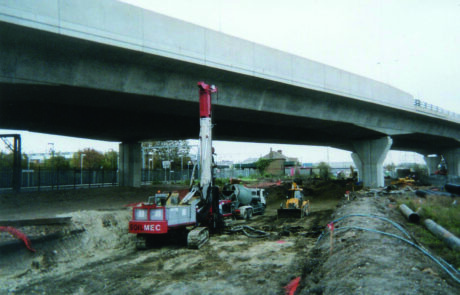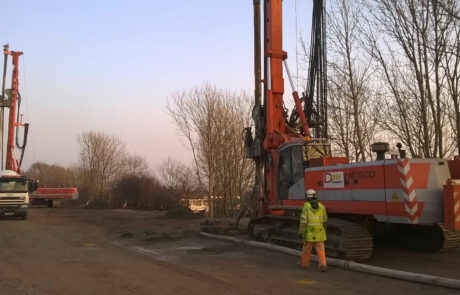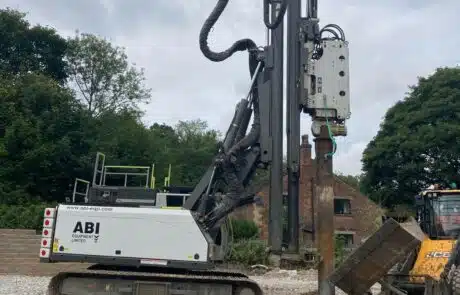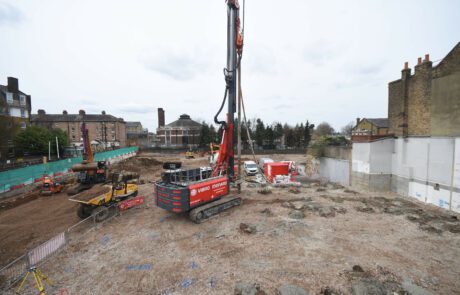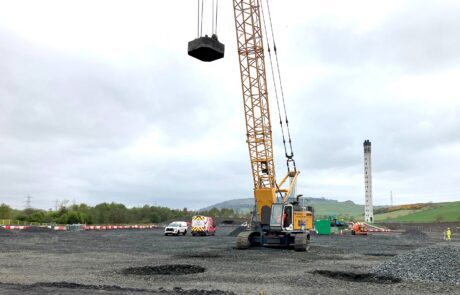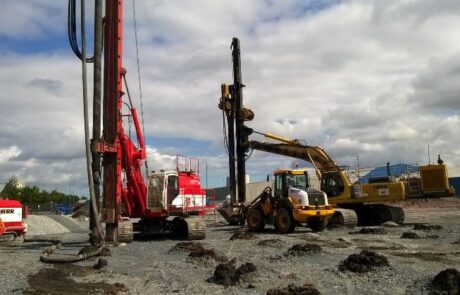OWNER:
Dubai Port World
ENGINEER:
CGR (Cullen Grummitt & Roe)
GENERAL CONTRACTOR:
Laing O’Rourke and Dredging International (Joint Venture)
MAIN FIGURES:
4,002 Vibrofloatations to depths of 20-25 metres, improving 1.3M m3

Project Details
The new £1.5bn London Gateway port in the Thames estuary will provide 2.7km of quay (The main quay is a 1.25km diaphragm wall), six deep-water berths with depth alongside of 17 metres, 24 giant quay cranes and an annual capacity of 3.5 million TEU (twenty-foot equivalent units). It will make London a hub for international trade once again. Menard has been mandated by Bachy Soletanche to improve the 1.3M m3 of dredged sand and gravel down to the Thames seabed with vibro compaction, and by the joint venture to complete vertical band drain for settlement rate acceleration.
Ground Conditions
The port will be built on entirely new land composed of material dredged form the Thames estuary. The ground to be improved therefore consists of sand and gravels, down to the seabed of the Thames, situated at 21m from the working platform in average. On some areas, under the reclaimed material, the ground is made of clay.
Solution
In order to achieve a relative density of 65% and a 37° angle of a shearing resistance, the equipment chosen was a V48 vibrator mounted on a 150t Sumitomo crane. Early refusals were encountered due to coarser material than expected, and presence of obstructions within the reclamation fill. After a further analysis (DPT and correlation) it appeared that no remedial action was needed.
In addition to the main vibro compaction works, as clay layers can be encountered below the sand fill, vertical drains have been installed in order to expedite ground settlement. As the sand was denser than expected, a “spike” predrilling system has been used (150mm tube mounted on hydraulic hammer).
Sustainable Development
This project aims to be included in a low carbon logistic. Thanks to its location, London gateway offers a hub closer to the UK market. Therefore, according to studies, more than 65M HGV road miles and 148 000t of CO2 could be saved every year.



